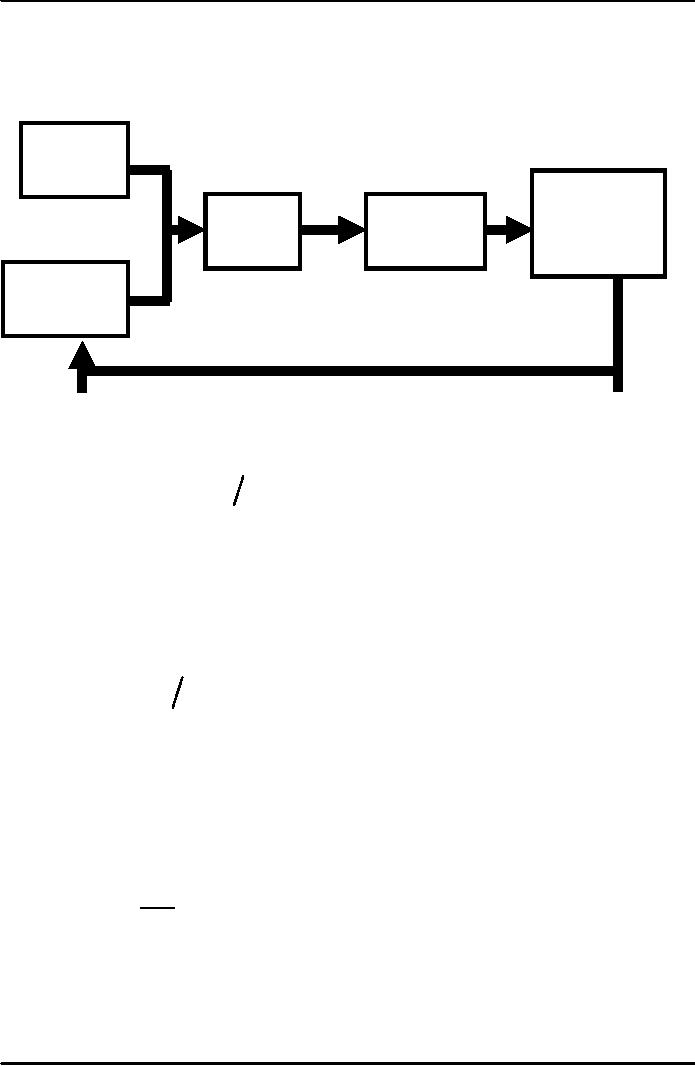 |

Macroeconomics
ECO 403
VU
LESSON
12
MONEY AND
INFLATION (Continued...)
The
Fisher Effect
�
The
Fisher equation:
i=r+�
S = I determines
r.
Hence, an
increase in �
causes
an equal increase in i.
This
one-for-one relationship
is
called the Fisher
effect.
Exercise:
Suppose
V is constant, M is growing 5% per
year, Y is growing 2% per
year, and r = 4.
�
Solve
for i (the nominal interest
rate).
�
If
SBP increases the money
growth rate by 2 percentage
points per year, find
Δi
.
�
If
the growth rate of Y falls
to 1% per year
�
What
will happen to �?
�
What
must SBP do if it wishes
to
keep
�
constant?
Answers:
First,
find �
= 5 - 2 = 3.
Then,
find i = r + �
= 4 + 3 =
7.
�
Δi = 2,
same as the increase in the
money growth rate.
�
If
SBP does nothing, Δ�
=
1.
To
prevent inflation from
rising, SBP must reduce
the money growth rate by
1
percentage
point per year.
Two
real interest
rates
�
�
=
actual inflation rate
(not
known until after it has
occurred)
�
�e
= expected
inflation rate
�
i
�e
=
ex ante
real
interest rate:
what
people expect at the time
they buy a bond or take
out a loan
�
i
� = ex post
real interest rate:
what
people actually end up
earning on their bond or
paying on their loan
Money
demand and the nominal
interest rate
�
The
Quantity Theory of Money
assumes that the demand
for real money balances
depends
only
on real income Y.
�
We
now consider another
determinant of money demand:
the nominal interest
rate.
�
The
nominal interest rate i is
the opportunity cost of
holding money (instead of
bonds or
other
interest-earning assets).
41

Macroeconomics
ECO 403
VU
�
Hence,
↑i
⇒ ↓
in
money demand.
Linkages
Among Money, Prices and
Interest rate
Money
Supply
Nominal
Price
Inflation
Interest
Level
Rate
Rate
Money
Demand
The
money demand
function
(M
P ) =
L
(i
, Y
)
d
(M/P)
d = real money demand,
depends
�
negatively
on i
i
is the opportunity cost of
holding money
�
positively
on Y
higher
Y ⇒
more
spending so, need more
money
(L
is used for the money
demand function because
money is the most liquid
asset.)
(M
P )d
=
L
(i
,Y
)
=
L
(r
+ � e
, Y
)
When
people are deciding whether
to hold money or bonds, they
don't know what inflation
will
turn
out to be.
Hence,
the nominal interest rate
relevant for money demand is
r + �e.
M
Equilibrium
=
L
(r
+ � e
,Y
)
P
Supply
of Real money
balances
Real
money demand
42

Macroeconomics
ECO 403
VU
What
determines what
Variable
how
determined (in the long
run)
M
exogenous
(SBP)
r
adjusts
to make S = I
Y
Y
= F
(K
, L
)
M
P
adjusts
to make
=
L
(i
,Y
)
P
How
P
responds
to ΔM
�
For
given values of r, Y, and �e,
a
change in M causes P to change by
the same percentage ---
just like in the
Quantity
Theory
of Money.
What
about expected
inflation?
�
Over
the long run, people
don't consistently over- or
under-forecast inflation, so �e
= �
on
average.
�
In
the short run, �e
may
change when people get
new information.
EX:
Suppose SBP announces it
will increase M next year.
People will expect
next
year's
P to be higher, so �e
rises.
�
This
will affect P now, even
though M hasn't changed
yet.
How
P
responds
to Δ�e
M
=
L
(r
+ � e
,Y
)
P
�
For
given values of r, Y, and
M,
↑
� e
⇒ ↑ i
(the
Fisher effect)
⇒
↓ (M
P )
d
⇒
↑ P
to make
(M
P ) fall
to
re-establish eq'm
The
social costs of
inflation
...fall
into two categories:
1.
Costs when inflation is
expected
2.
Additional costs when
inflation is
different
than people had
expected.
43
Table of Contents:
- INTRODUCTION:COURSE DESCRIPTION, TEN PRINCIPLES OF ECONOMICS
- PRINCIPLE OF MACROECONOMICS:People Face Tradeoffs
- IMPORTANCE OF MACROECONOMICS:Interest rates and rental payments
- THE DATA OF MACROECONOMICS:Rules for computing GDP
- THE DATA OF MACROECONOMICS (Continued…):Components of Expenditures
- THE DATA OF MACROECONOMICS (Continued…):How to construct the CPI
- NATIONAL INCOME: WHERE IT COMES FROM AND WHERE IT GOES
- NATIONAL INCOME: WHERE IT COMES FROM AND WHERE IT GOES (Continued…)
- NATIONAL INCOME: WHERE IT COMES FROM AND WHERE IT GOES (Continued…)
- NATIONAL INCOME: WHERE IT COMES FROM AND WHERE IT GOES (Continued…)
- MONEY AND INFLATION:The Quantity Equation, Inflation and interest rates
- MONEY AND INFLATION (Continued…):Money demand and the nominal interest rate
- MONEY AND INFLATION (Continued…):Costs of expected inflation:
- MONEY AND INFLATION (Continued…):The Classical Dichotomy
- OPEN ECONOMY:Three experiments, The nominal exchange rate
- OPEN ECONOMY (Continued…):The Determinants of the Nominal Exchange Rate
- OPEN ECONOMY (Continued…):A first model of the natural rate
- ISSUES IN UNEMPLOYMENT:Public Policy and Job Search
- ECONOMIC GROWTH:THE SOLOW MODEL, Saving and investment
- ECONOMIC GROWTH (Continued…):The Steady State
- ECONOMIC GROWTH (Continued…):The Golden Rule Capital Stock
- ECONOMIC GROWTH (Continued…):The Golden Rule, Policies to promote growth
- ECONOMIC GROWTH (Continued…):Possible problems with industrial policy
- AGGREGATE DEMAND AND AGGREGATE SUPPLY:When prices are sticky
- AGGREGATE DEMAND AND AGGREGATE SUPPLY (Continued…):
- AGGREGATE DEMAND AND AGGREGATE SUPPLY (Continued…):
- AGGREGATE DEMAND AND AGGREGATE SUPPLY (Continued…)
- AGGREGATE DEMAND AND AGGREGATE SUPPLY (Continued…)
- AGGREGATE DEMAND AND AGGREGATE SUPPLY (Continued…)
- AGGREGATE DEMAND IN THE OPEN ECONOMY:Lessons about fiscal policy
- AGGREGATE DEMAND IN THE OPEN ECONOMY(Continued…):Fixed exchange rates
- AGGREGATE DEMAND IN THE OPEN ECONOMY (Continued…):Why income might not rise
- AGGREGATE SUPPLY:The sticky-price model
- AGGREGATE SUPPLY (Continued…):Deriving the Phillips Curve from SRAS
- GOVERNMENT DEBT:Permanent Debt, Floating Debt, Unfunded Debts
- GOVERNMENT DEBT (Continued…):Starting with too little capital,
- CONSUMPTION:Secular Stagnation and Simon Kuznets
- CONSUMPTION (Continued…):Consumer Preferences, Constraints on Borrowings
- CONSUMPTION (Continued…):The Life-cycle Consumption Function
- INVESTMENT:The Rental Price of Capital, The Cost of Capital
- INVESTMENT (Continued…):The Determinants of Investment
- INVESTMENT (Continued…):Financing Constraints, Residential Investment
- INVESTMENT (Continued…):Inventories and the Real Interest Rate
- MONEY:Money Supply, Fractional Reserve Banking,
- MONEY (Continued…):Three Instruments of Money Supply, Money Demand